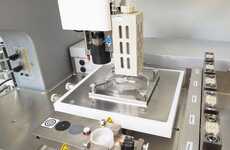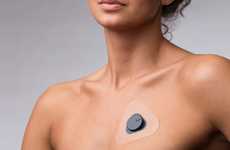
Shanghai's JALA Group Created Artificial Skin with Additive Manufacturing
Laura McQuarrie — February 18, 2017 — Tech
While many companies are just now claiming that they have the technologies and know-how to create artificial skin, others like Shanghai's JALA Group have already succeeded in making 3D-printed skin from skin cells.
What sets JALA Group's work apart is that it created 3D-printed Asian skin, which is significant because Caucasian and Asian skin are texturally different. As one of the leading cosmetic companies in China, JALA Group is focused on developing cosmetics that are overall more suitable for Asian women. What this means for researchers is that they will be able to use 3D-printed Asian skin as a viable and cruelty-free alternative to animal testing.
3D-printed organs and bones are becoming more common across the healthcare industry, and as this project shows, bioprinting technology has potential applications that go well beyond the walls of a hospital.
What sets JALA Group's work apart is that it created 3D-printed Asian skin, which is significant because Caucasian and Asian skin are texturally different. As one of the leading cosmetic companies in China, JALA Group is focused on developing cosmetics that are overall more suitable for Asian women. What this means for researchers is that they will be able to use 3D-printed Asian skin as a viable and cruelty-free alternative to animal testing.
3D-printed organs and bones are becoming more common across the healthcare industry, and as this project shows, bioprinting technology has potential applications that go well beyond the walls of a hospital.
Trend Themes
1. Bioprinting Technology - JALA Group's success in creating 3D-printed skin demonstrates the potential of bioprinting technology to revolutionize the healthcare industry.
2. Cruelty-free Alternatives - The development of 3D-printed Asian skin provides a cruelty-free alternative to animal testing, offering disruptive innovation opportunities in the cosmetics and pharmaceutical industries.
3. Personalized Cosmetics - The ability to 3D-print different skin types opens up possibilities for developing personalized cosmetics, creating disruptive innovation opportunities in the cosmetic industry.
Industry Implications
1. Healthcare - The advancement of bioprinting technology has the potential to disrupt healthcare by enabling the creation of 3D-printed organs and tissues.
2. Cosmetics - The development of 3D-printed skin allows for the creation of personalized cosmetics and cruelty-free testing methods, offering disruptive innovation opportunities in the cosmetics industry.
3. Pharmaceutical - The use of 3D-printed Asian skin as an alternative to animal testing could revolutionize the pharmaceutical industry by providing more accurate and ethical testing methods.
4.5
Score
Popularity
Activity
Freshness























